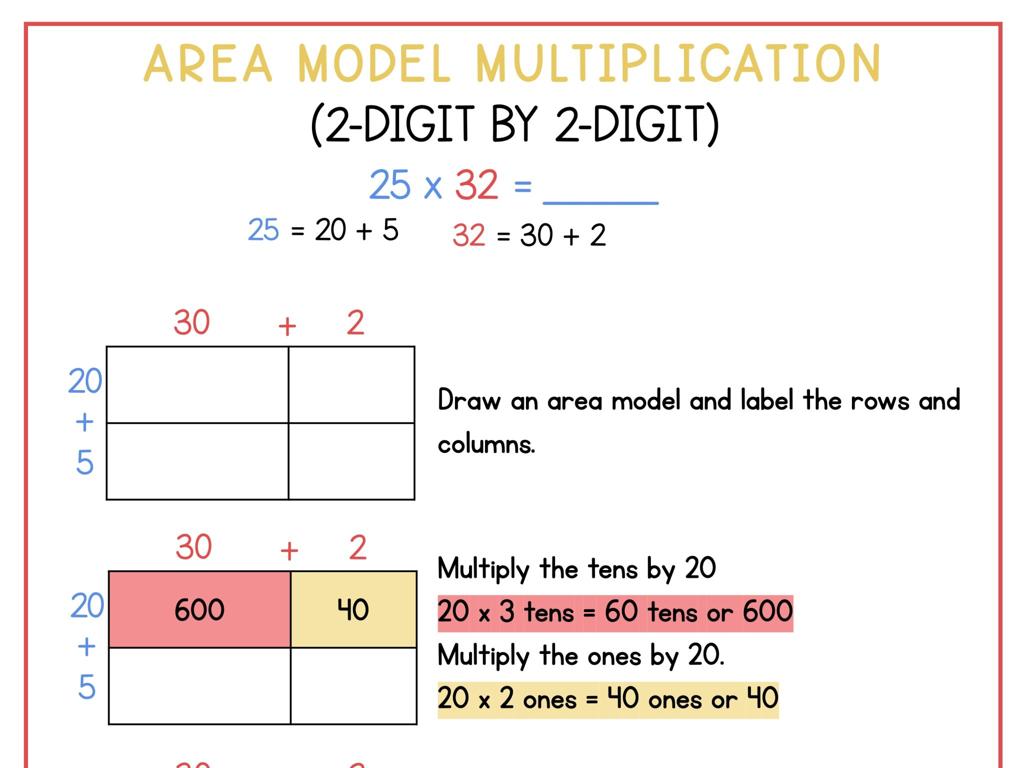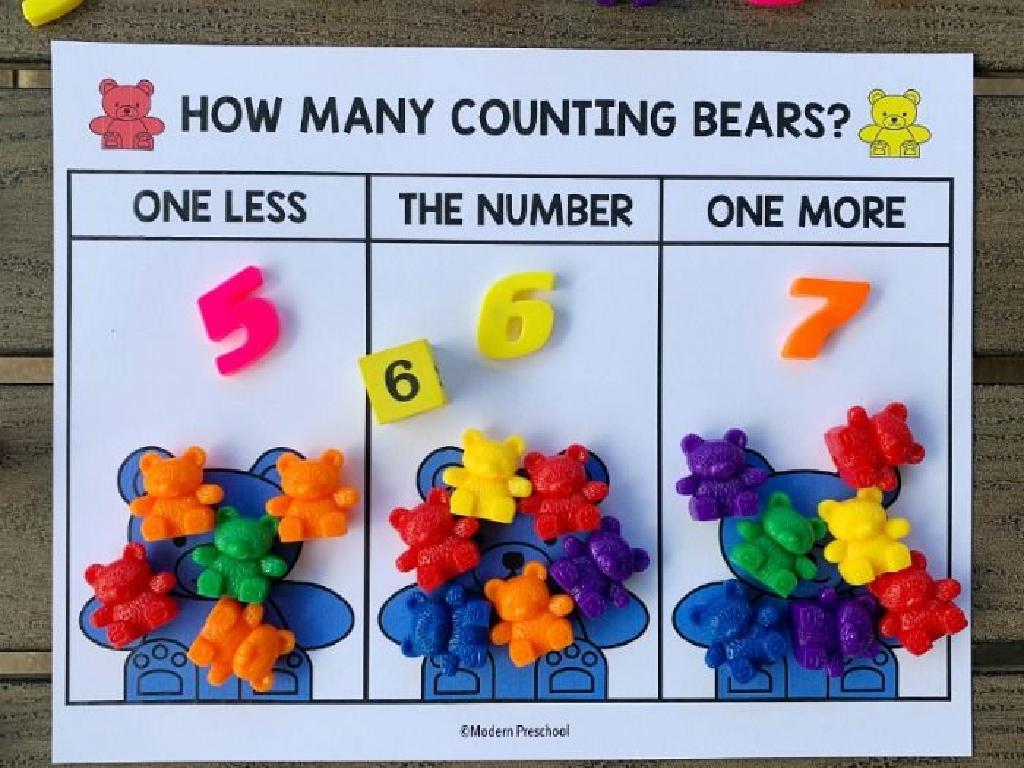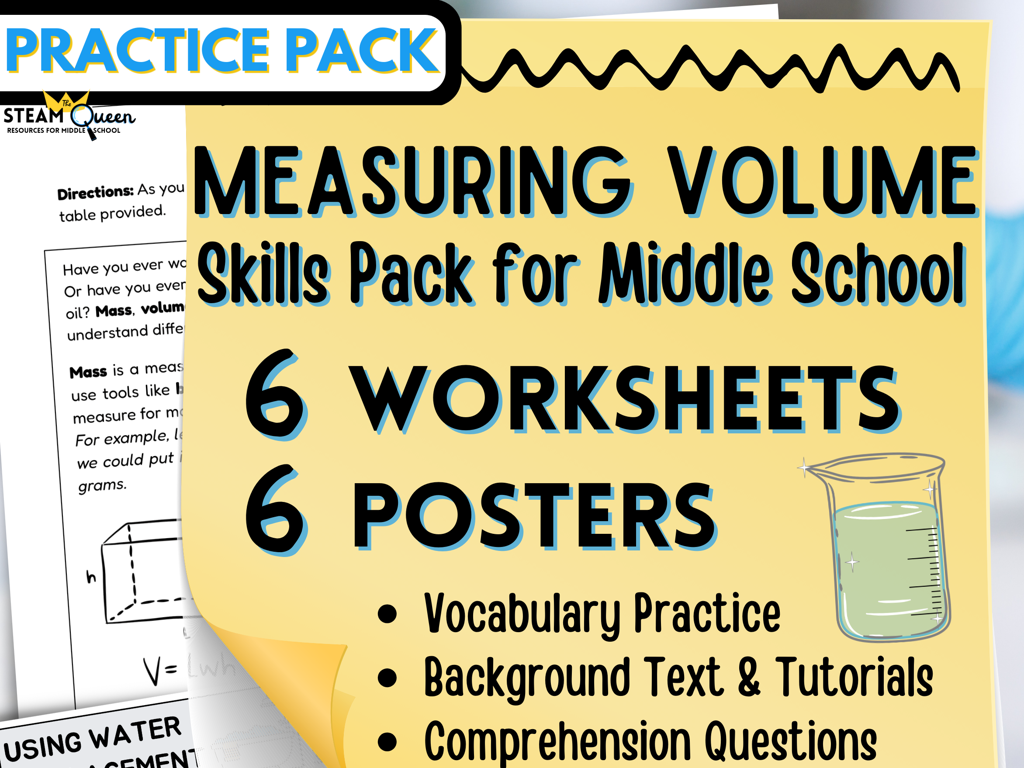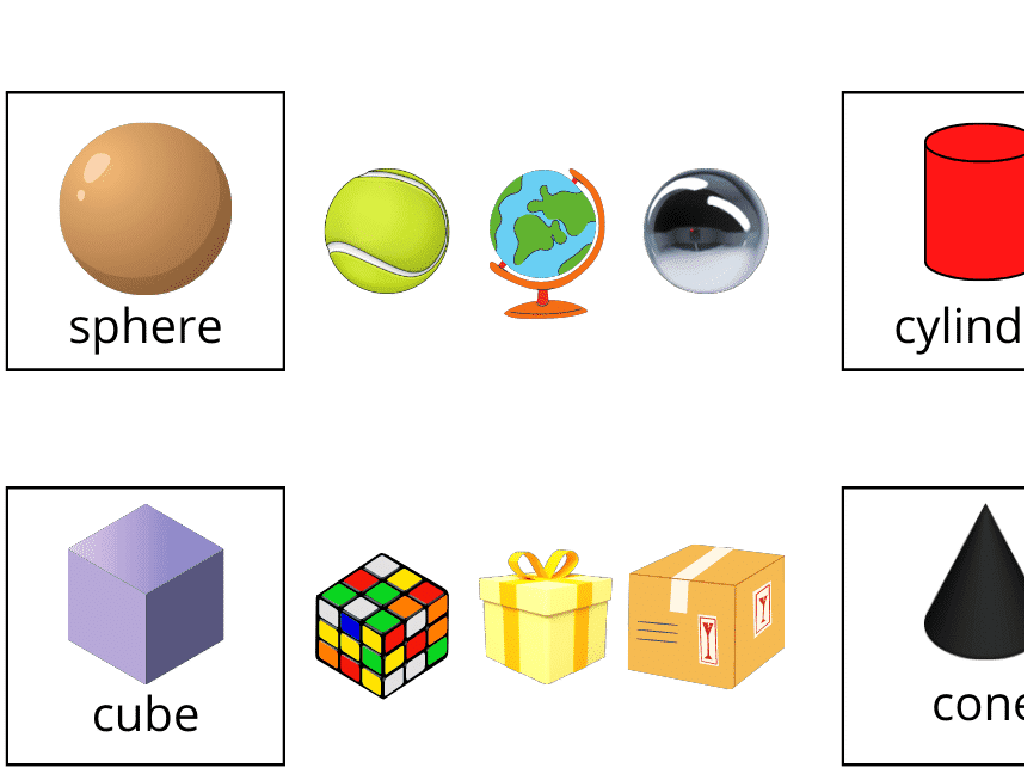Identify Multiple Materials In Objects
Subject: Science
Grade: Third grade
Topic: Materials
Please LOG IN to download the presentation. Access is available to registered users only.
View More Content
Exploring the Materials Around Us
– Discovering object composition
– What are your toys made of?
– Everyday items, various materials
– Glass, plastic, metal, and wood are common.
– Significance of material choice
– Materials affect an object’s strength and look.
– Impact on usage and environment
– Choices can affect how we use items and our planet.
|
This slide introduces students to the concept of materials science with a focus on identifying the different materials that make up everyday objects. Encourage the students to think about the objects they use daily and what materials they might be made of. Discuss how the choice of material affects the object’s function, appearance, and durability. Highlight the importance of material selection in terms of environmental impact, such as the recyclability of materials. This discussion can lead to a broader conversation about sustainability and responsible consumption.
Exploring Materials Around Us
– Understanding materials
– Materials are what things are made of
– Common materials we use
– Metal, plastic, wood, glass are everywhere
– Unique properties of materials
– Hardness, flexibility, transparency
– Examples of material uses
– Metal in cars, plastic for toys, wood in furniture, glass in windows
|
This slide introduces the concept of materials to third-grade students, explaining that everything they use is made from some type of material. Start by discussing common materials such as metal, plastic, wood, and glass, and ask students to identify objects in the classroom made from these materials. Highlight the unique properties of each material, such as metal being hard and strong, plastic being lightweight and flexible, wood being sturdy and natural, and glass being transparent and fragile. Encourage students to think about why certain materials are used for specific objects and what properties make them suitable for that use. This will help students understand the relationship between the properties of materials and their applications in everyday life.
Properties of Materials
– Materials have unique properties
– Hardness, flexibility, transparency, etc.
– Properties determine material use
– Why are windows glass, not wood?
– Examples of material properties
– Glass is transparent, wood is opaque
– Class activity: Find & discuss
|
This slide introduces the concept that materials have different properties, which determine their use in everyday objects. Explain that hardness refers to how easily a material can be scratched or dented, flexibility to how much it can bend without breaking, and transparency to whether it can be seen through. Use examples like glass being used for windows because it is transparent, allowing light to pass through, while wood is used for furniture because it is hard and sturdy. For the class activity, have students find objects around the classroom and discuss what properties the materials have and why those materials were used for that object. This will help them understand the practical application of material properties.
Discovering Materials in Everyday Objects
– Observe objects around you
– Guess the materials used
– Is it plastic, metal, or wood? Think about what you’re holding or using.
– Discuss material purposes
– Why is glass used for windows? Or metal for a bike?
– Understand material choices
– Different materials have unique properties that make them useful for certain objects.
|
This slide is aimed at sparking curiosity in students about the materials that make up the objects they use every day. Encourage the students to look around the classroom or think about items at home and guess what materials they are made from. This will help them to start thinking critically about the properties of different materials and why they might be chosen for specific uses. For example, glass is transparent and hard, making it good for windows, while metal is strong and durable, ideal for a bike frame. The discussion will help students understand that the choice of material is based on its properties and the object’s intended use. This understanding is fundamental in science and engineering.
Material Match-Up Game
– Match objects with their materials
– Discuss material choices for objects
– Why is a window made of glass and not wood?
– Consider material properties
– Hardness, flexibility, transparency
– Share your thoughts with the class
|
This interactive game is designed to help students understand the relationship between an object and the materials it is made from. Encourage the students to think about the properties of materials such as hardness, flexibility, and transparency, and why certain materials are better suited for specific objects. For example, glass is used for windows due to its transparency and wood for furniture because of its strength and workability. During the activity, students will match various everyday objects to the materials they are made from and discuss their reasoning. Prepare a list of objects and materials for the game, and ensure to have a discussion afterward where students can share their thoughts and learn from each other’s reasoning.
Why Do Materials Matter?
– Materials impact the environment
– Think about how plastic affects wildlife.
– Suitable materials increase durability
– A metal toy car is stronger than a paper one.
– Safety is linked to material choice
– A glass cup can break and be dangerous.
– Engineers prioritize material selection
– Designers think about the best material for toys.
|
This slide aims to teach students about the importance of materials in our daily lives and how they affect the environment, durability, and safety of objects. Discuss how different materials, like plastic, metal, or glass, have various impacts on the world around us. Explain that choosing the right material is crucial for making objects last longer and keeping us safe. Highlight the role of engineers and designers in selecting materials for everything from toys to buildings. Encourage students to think about the materials of objects they use every day and how those materials were chosen for a specific purpose.
Class Activity: Material Scavenger Hunt
– Let’s explore materials in our classroom!
– Find items made of metal, plastic, wood, glass
– Add one object per material to your checklist
– Share your findings with the class
|
This activity is designed to help students identify and differentiate between various materials found in everyday objects. Before starting, explain what materials are and give examples. During the scavenger hunt, students will search for objects made of metal, plastic, wood, and glass within the classroom. Provide each student with a checklist to record at least one object they find for each material. After the hunt, gather the students and have them share what they found, discussing the properties of each material. This will reinforce their understanding of materials and how they are used in different objects. Possible variations of the activity could include finding objects of different shapes, sizes, or colors made from the same material, or categorizing objects by their use or material properties.
Conclusion and Reflection: Materials Discovery
– Recap of materials learned
– We explored various materials objects are made of.
– Importance of material knowledge
– Knowing materials helps us use them better.
– Share your scavenger hunt item
– Each student will talk about one object they found.
– Reflect on today’s discoveries
|
As we wrap up today’s lesson, we’ll revisit the key points about the different materials we come across in everyday objects. Understanding these materials is crucial as it helps us make informed choices in using and recycling them. Encourage the students to think about how the properties of materials affect their use. For example, why are windows made of glass and not wood? Then, have each student share one interesting item they found during the scavenger hunt and discuss the materials it’s made from. This reflection time solidifies their learning and allows them to appreciate the diversity of materials in their environment.






